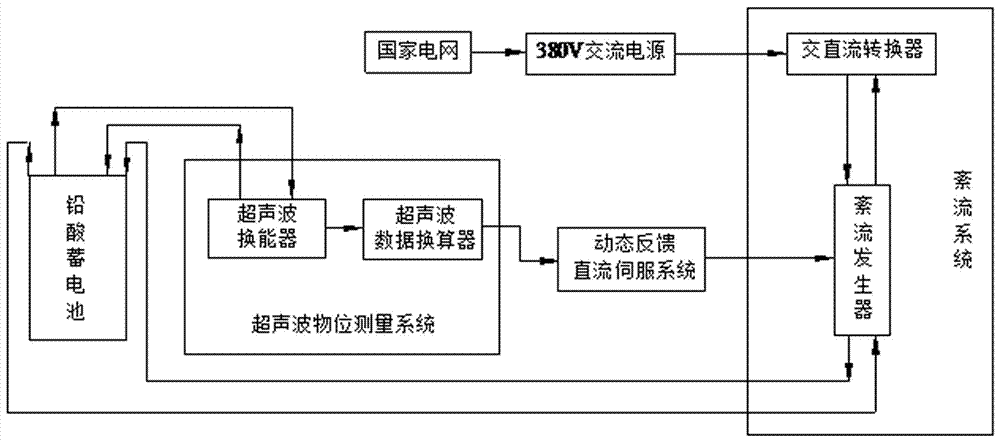Lead-acid battery internalization activator, internalization system and internalization method
A lead-acid battery, internalization technology, applied in the direction of electrochemical generators, secondary batteries, secondary battery repair/maintenance, etc., can solve the problems of not being able to reduce the temperature of the internalization process, not being widely used, and being unable to convert electric energy, etc. Achieve the effects of improving charging receiving capacity, eliminating electrochemical internal resistance, and convenient operation
- Summary
- Abstract
- Description
- Claims
- Application Information
AI Technical Summary
Problems solved by technology
Method used
Image
Examples
Embodiment 1
[0058] According to the embodiment of the lead-acid storage battery internalization of the present invention, it is formed by mixing fumed silica, curing agent and deionized water, and the curing agent includes anhydrous sodium sulfate, lithium tetraborate, lauryl Sodium sulfate, fatty alcohol polyoxyethylene ether sodium sulfate, dibutyltin dilaurate, N.N-bishydroxyethyl alkylamide, polyacrylamide, stannous sulfate, sodium polyacrylate, potassium dihydrogen phosphate, dihydrogen trioxide aluminum.
[0059] The weight percent of each substance in the described internalization into activator is, fumed silica 10%, anhydrous sodium sulfate 1.5%, lithium tetraborate 1.5%, sodium lauryl sulfate 0.5%, fatty alcohol polyoxyethylene ether sulfuric acid Sodium 0.5%, dibutyltin dilaurate 0.5%, N.N-bishydroxyethyl alkylamide 0.5%, polyacrylamide 0.5%, stannous sulfate 2.0%, sodium polyacrylate 2.0%, potassium dihydrogen phosphate 2.0% , aluminum oxide 2.0%, and the balance is deionized ...
Embodiment 2
[0075] According to another embodiment of the lead-acid storage battery internalization activator, internalization system and internalization method thereof of the present invention, the formulation of the internalization activator, the design of the internalization system, the steps of the internalization method and the internalization technology Beneficial effects, etc. are all the same as in Example 1, except that: the weight percent of each substance in the internalized activator is: fumed silica 1.0%, anhydrous sodium sulfate 2.5%, lithium tetraborate 2.5%, dodecyl Alkyl sodium sulfate 1.5%, fatty alcohol polyoxyethylene ether sodium sulfate 1.5%, dibutyltin dilaurate 1.5%, N.N-bishydroxyethyl alkylamide 1.5%, polyacrylamide 1.5%, stannous sulfate 4.0 %, sodium polyacrylate 4.0%, potassium dihydrogen phosphate 4.0%, aluminum oxide 4.0%, and the balance is deionized water. The ratio of internalization into activator and sulfuric acid electrolyte is 1:30. The electrolyte s...
Embodiment 3
[0077] According to another embodiment of the lead-acid storage battery internalization activator, internalization system and internalization method thereof of the present invention, the formulation of the internalization activator, the design of the internalization system, the steps of the internalization method and the internalization technology Beneficial effects etc. are all identical with embodiment one, difference is: the weight percent of each substance in described internalization into activator is, fumed silicon dioxide 20%, anhydrous sodium sulfate 0.2%, lithium tetraborate 0.2%, dodecyl Alkyl sodium sulfate 0.03%, fatty alcohol polyoxyethylene ether sodium sulfate 0.03%, dibutyltin dilaurate 0.03%, N.N-bishydroxyethyl alkylamide 0.03%, polyacrylamide 0.03%, stannous sulfate 0.01 %, sodium polyacrylate 0.01%, potassium dihydrogen phosphate 0.01%, aluminum oxide 0.01%, and the balance is deionized water. The ratio of the internalization activator to the sulfuric acid ...
PUM
 Login to View More
Login to View More Abstract
Description
Claims
Application Information
 Login to View More
Login to View More - R&D
- Intellectual Property
- Life Sciences
- Materials
- Tech Scout
- Unparalleled Data Quality
- Higher Quality Content
- 60% Fewer Hallucinations
Browse by: Latest US Patents, China's latest patents, Technical Efficacy Thesaurus, Application Domain, Technology Topic, Popular Technical Reports.
© 2025 PatSnap. All rights reserved.Legal|Privacy policy|Modern Slavery Act Transparency Statement|Sitemap|About US| Contact US: help@patsnap.com

